- Author: Kathy Keatley Garvey
The UC Davis Department of Entomology and Nematology's seminar on Wednesday, Feb. 26 will feature six “Faculty Flash Talks.”
The seminar, set from 4:10 to 5 p.m. in 122 Briggs Hall, will include Joanna Chiu, Jason Bond, Geoffrey Attardo, Rachel Vannette, Julia Fine, and Arathi Seshadri.
Associate professor Joanna Chiu, vice chair of the department, will present “results from a project in which we study the mechanisms by which insects sense environmental changes (temperature and photoperiod) to regulate their seasonal physiology. Our lab has identified a protein that can track seasonal changes in temperature and photoperiod to promote winter physiology. Without this protein, insects don't know winter is coming!”
Her laboratory research interests include molecular genetics of animal behavior, Circadian rhythm biology, and posttranslational regulation of proteins.
Capsule information:
Jason Bond, Schlinger Chair in Insect Systematics, is a global expert on spiders. His research interests include systematics, taxonomy, and evolution of terrestrial arthropods with an emphasis on arachnids and myriapods. "We employ molecular, morphological, and ecological approaches to study questions related to evolutionary diversification at multiple hierarchical levels (populations – higher taxa)," he says. (See recent grant.)
Geoffrey Attardo, a medical entomologist/geneticist, focuses his research on insect disease vectors, insect reproduction, vector/parasite interactions, reproductive physiology, male seminal secretions, symbiosis, lactation, nutrition, lipid metabolism, transcriptional regulation, comparative genomics, transcriptomics, proteomics and metabolomics. His research on tsetse flies was recently featured on KQED's Deep Look (see news story on Deep Look). (See news story on landmark research.)
Rachel Vannette, community ecologist and assistant professor who coordinates the department's seminars, says: "All plants are colonized by microorganisms that influence plant traits and interactions with other species, including insects that consume or pollinate plants. I am interested in the basic and applied aspects of microbial contributions to the interaction between plants and insects. I also use these systems to answer basic ecological questions, such as what mechanisms influence plant biodiversity and trait evolution." (See recent research)
Arathi Seshadri and Julia Fine, who recently joined the USDA-ARS lab on Bee Biology Road, UC Davis, aim to improve honey bee survival and beekeeping sustainability in California and nationwide. They collaborate with federal, university, non-governmental and industry partners. (See news story on opening of the facility.)
Seshadri, a pollination biologist with expertise in honey bee behavior and plant reproductive strategies, is working with beekeepers and farmer stakeholders to develop projects aimed at finding solutions to the ongoing pollination challenges. Also trained as an evolutionary biologist, she has applied principles of plant-pollinator mutualism, specifically the impact of phytochemicals in pollen and nectar on honey bee health and colony performance. Her contributions to pollinator conservation include enhancing the sustainability of all pollinators, including native bees on farms and urban areas. She also has expertise in agroecosystem-based approaches and citizen science programs to promote pollinator diversity and abundance.
Fine, an entomologist with expertise in insect toxicology, honey bee physiology, reproduction and development, focuses her research on identifying how stressors impact honey bee behavior, health and fecundity. She uses both established and novel laboratory techniques. Her previous projects involved investigating how agrochemical and viral stressors interact to affect the development and survival of honey bee brood and how nutritional stress affects honey bee queen fecundity. In engaging with beekeepers and growers, Fine is researching how realistic biotic and abiotic stressors affect honey bee reproduction, longevity and pollination services, and she is identifying techniques and strategies to overcome these effects.
The seminar is open to all interested persons. For more information, contact Vannette at rlvannette@ucdavis.edu.
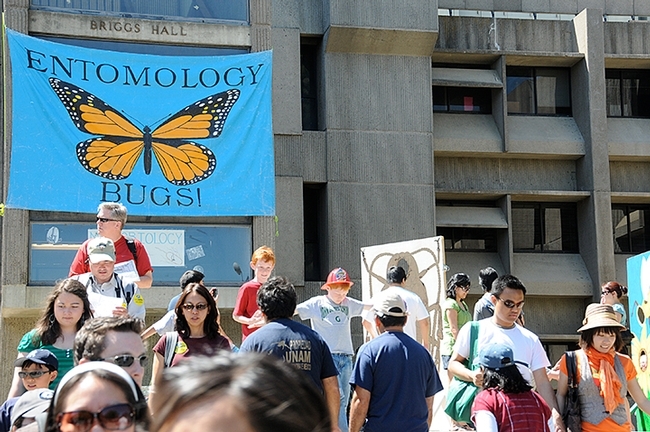
- Author: Kathy Keatley Garvey
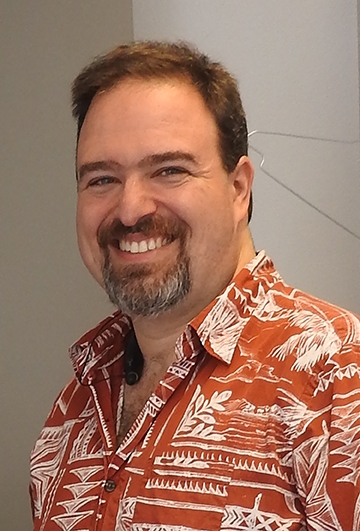
In humans, the disease is commonly known as sleeping sickness: the parasite invades the central nervous system and disrupts the sleep cycle. If not treated, the disease can result in progressive mental deterioration, coma, systemic organ failure and death.
The newly published research in the journal Genome Biology compares and analyzes the genomes of six species of tsetse flies and could lead to better insights into disease prevention and control. “It was a behemoth project, spanning six to seven years,” said Attardo, an assistant professor in the Department of Entomology and Nematology. “This project represents the combined efforts of a consortium of 56 researchers throughout the United States, Europe, Africa and China.”
Tsetse flies, Glossina sp., are of great medical and economic importance, wrote Attardo and co-authors Adly M. M. Abd-Alla of the Insect Pest Control Laboratory, Division of Nuclear Techniques in Food and Agriculture, Vienna, Austria, and Serap Aksoy of the Yale School of Public Health, New Haven, Conn. They related that since the implementation of surveillance and record-keeping in the 20th century, “millions of people in sub-Saharan Africa” have died from sleeping sickness.
Tsetse flies, which resemble house flies, are distinguished from other Diptera by unique adaptations, including lactation and the birthing of live young, a vertebrate blood-specific diet by both sexes, and obligate bacterial symbiosis. The scientists targeted six Glossina genomes representing three sub-genera: Morsitans (G. morsitans morsitans, G. pallidipes, G. austeni), Palpalis (G. palpalis, G. fuscipes), and Fusca (G. brevipalpis) which represent different habitats, host preferences, and vectorial capacity.
“The aim of these studies,” the authors wrote, “was to generate and mine the genomic sequences of six species of tsetse flies with different ecological niches, host preferences, and vectorial capacities. The goals of the analyses performed here are to identify the novel genetic features specific to tsetse flies and to characterize the differences between the Glossina species to correlate the genetic changes with phenotypic differences in these divergent species.”
“Expanded genomic discoveries reveal the genetics underlying Glossina biology and provide a rich body of knowledge for basic science and disease control,” the scientists concluded. “They also provide insight into the evolutionary biology underlying novel adaptations and are relevant to applied aspects of vector control such as trap design and discovery of novel pest and disease control strategies.”
Attardo, who joined the UC Davis faculty in 2017 after serving 13 years with the Yale School of Public Health, said the massive research project involved “the complete sequencing and assembly of six Glossina species, including the two primary vectors of human African tryapnosomiasis, three major vectors of animal trypanosomiasis and one ancestral tsetse species which demonstrates some resistance to the species of trypanosomes responsible for human and some animal forms of the disease.”
The research, titled "Comparative Genomic Analysis of Six Glossina Genomes, Vectors of African Trypanosomes," offers:
- A clearer definition of the Glossina phylogenetic tree and placement of a controversial species.
- Identification of rapidly evolving regions of the tsetse genome relative to Drosophila.
- Identification of Glossina specific genes and their functions as well as expansions and contractions of gene families in tsetse relative to other flies.
“We discuss the functional implications of these changes and how they relate to tsetses' physiological adaptations and evolutionary history,” Attardo noted.
“We discovered that the rhodopsin gene family which is associated with vision/color detection shows conservation in motion detection and tracking associated genes.” Attardo said. “However, the gene coding for the protein that detects blue wavelengths is divergent relative to houseflies and shows the highest variance between Glossina species of all the rhodopsin genes. This is significant as the color blue is used as an attractant to bring tsetse into the traps used for control. It suggests that different species may be tuned/attracted to different wavelengths of blue.”
They also analyzed the genes associated with tsetse immunity and the relative differences in comparison with houseflies and fruit flies. “We see many immune genes missing in Glossina and increased copy numbers of genes associated with negative regulation of immune function. We think this may be associated with the evolution of obligate symbiosis as a way to protect their symbionts.”
“We also found extreme conservation of milk proteins between all sequenced species,” the UC Davis medical entomologist said. “On the flip side, male reproductive proteins (seminal proteins) appear to be very rapidly evolving relative to the rest of the genome. The copy numbers of these genes also change significantly between species.”
The scientists also found an overall reduction of olfactory associated genes and protein modifications specific to salivary proteins in the two species that vector human trypanosomiasis.
In 1995, the World Health Organization (WHO) estimated that 60 million people were at risk of sleeping sickness, with an estimated 300,000 new cases per year in Africa, and fewer than 30,000 cases diagnosed and treated. Due to increased control, only 3796 cases were reported in 2014, with less than 15,000 estimated cases, according to WHO statistics.
The parasitic disease “mostly affects poor populations living in remote rural areas of Africa,” according to WHO. “Untreated, it is usually fatal. Travelers also risk becoming infected if they venture through regions where the insect is common. Generally, the disease is not found in urban areas, although cases have been reported in suburban areas of big cities in some disease endemic countries.”
Several National Institutes of Health (NIH) grants, awarded to Attardo and Aksoy, funded the research. They also drew funding from the McDonnell Genome Institute at Washington University School of Medicine; the National Research Foundation, the Swiss National Science Foundation, and the Slovak Research and Development Agency.
Related Links:
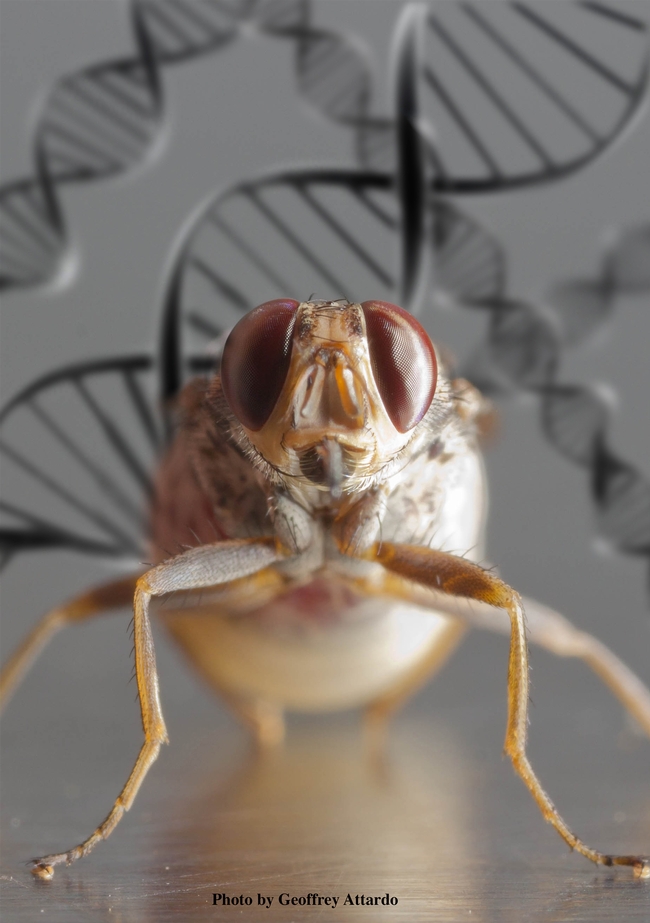
- Author: Kathy Keatley Garvey
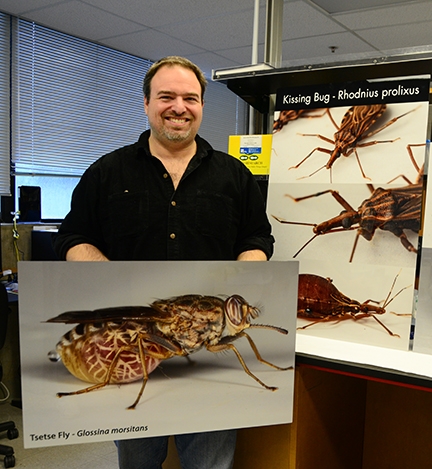
The event is free and open to the public and will be hosted by Jared Shaw of the UC Davis College of Letters and Science.
“It is actually going to be a very basic talk aimed at lay audiences and kids,” Attardo says. “I'll be talking about my background, how I became an entomologist and how I ended up working on tsetse flies. Then I am going to discuss the life history of tsetse flies, where they can be found, why they are of medical importance and how their reproductive biology differs so dramatically from other flies that people are familiar with. My plan is to go over their reproductive cycle, how they develop intrauterine larvae, the reproductive adaptations that allow them to perform this feat and then go over what we know about tsetse milk secretions and how they compare to mammalian milk in terms of nutritional content.”
“The aim is for it to be very informal, with very little scientific jargon and to be discussion-oriented so that there is lots of questions and answers. I am also bringing some items from the lab that can be passed around the audience for show and tell (homemade tsetse cages, the blood feeding system we use to feed the flies and some tsetse flies preserved in alcohol).
Attardo focuses his research on numerous aspects of the physiology of tsetse fly reproduction, with the goal to identify and understand key aspects of its reproductive biology. He joined the UC Davis Department of Entomology and Nematology in 2017 from the Yale University School of Public Health, New Haven, Conn., where he researched tsetse flies in the lab of Serap Aksoy.
Attardo considers the tsetse fly "one of the champions of the insect world."
"In addition to being vectors of a deadly disease, Trypanosomiasis, these flies have undergone amazing alterations to their physiology relative to other insects," he says. "Some examples of this are their ability feed exclusively on blood, their obligate relationship with a bacterial symbiont, the fact that they lactate and that they give birth to fully developed larval offspring."
Attardo is the co-author of Adenotrophic Viviparity in Tsetse Flies: Potential for Population Control and as an Insect Model for Lactation, published in January 2015 in the Annual Review of Entomology.
- Author: Kathy Keatley Garvey
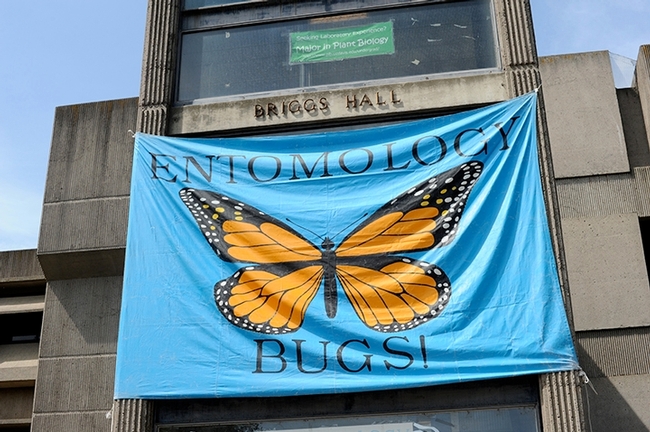
Picnic Day serves as the university's annual open house for prospective and current students, families, alumni, staff, faculty, and the greater Davis and regional communities. It all begins with the parade opening ceremony at 9:30 a.m. by the grandstands on North Quad Avenue, across from Wickson Hall. The parade begins at 10 a.m. Most Picnic Day events will run from 10 a.m. to 4 or 4 p.m. (See more information on the campus website.)
At Briggs Hall, home of the UC Davis Department of Entomology and Nematology, activities will take place from 9 a.m. to around 4:30 p.m., while the Bohart Museum will be open from 11 a.m. to 2 p.m.--shorter hours to enable the Bohart scientists and volunteers to help at Briggs Hall and with the UC Davis Picnic Day Parade. The UC Davis Entomology Club's parade entry is a gigantic black widow spider.
The Bohart Museum, themed, "Will Travel for Bugs: The Bohart Museum of Entomology's Collections from Around the World," is nominated for a people's choice award, as is the honey tasting at Briggs Hall. QR codes will be at each site. "Visitors will have the opportunity to vote for their favorite exhibits in five award categories," according to Madhuri Narayan, UC Davis Picnic Day exhibits director. Folks can vote by QR or vote here from 8 a.m. to 10 p.m. April 13. The prize for earning the most votes? "An awesome certificate and bragging rights," Narayan said.
Briggs Hall. Among the scheduled events:
- Cockroach Races: Participants can pick their favorite "roach athlete" and cheer it to victory.
- Honey Tasting: Extension apiculturist Elina Lastro Niño is planning on a number of varietals of honey.
- Maggot Art: Participants will dip a maggot into water-based, non-toxic paint and position it on paper and let it crawl. Voila! Maggot art, suitable for framing.
- Virtual Reality Bugs: Medical entomologist Geoffrey Attardo will set up a virtual reality system to enable people to view three dimensional models of insects. In VR, the models can be made to look life size, 40 feet tall or anywhere in between, he says. Here's the link that to view them in your web browser: https://skfb.ly/6xVru
- Bee Observation Hive: Viewers can check out the queen, workers and drones in the bee observation hive and see tools used in beekeeping.
- Bug Doctor: The Doctor Is In: Graduate students will identify insects and arachnids and answer questions
- IPM Booth: UC Statewide Integrated Pest Management Program professionals will discuss and answer questions about insect pests, beneficial insects and pest control. They will display their publications and live insects. In keeping with tradition, they will give away free lady beetles (lady bugs), to be released in gardens to devour aphids and other soft-bodied insects.
- Ants: Graduate students from Professor Phil Ward's lab will talk to visitors about the amazing world of ants.
- Mosquito Abatement: Sacramento-Yolo Mosquito and Vector Control District professionals will staff a booth
- Dr. Death: Forensic entomologist Robert Kimsey will staff his traditional Dr. Death booth, inviting the visitors to ask questions and look through microscopes.
- Davis Fly Fishers: The anglers will demonstrate fly-tying techniques in Briggs 158
- Aquatic Insects: Professor Sharon Lawler's lab will display a number of aquatic insects.
- Scavenger Hunt: Participants will search for and identify insects.
- Insect Face Painting: Entomology Club members will face-paint bees, butterflies, lady beetles and other insects
- T-Shirt Sales: Visitors can take their pick or picks among insect-themed t-shirts (popular t-shirts include beetles and honey bees). Newly printed t-shirts feature the roach races, an American Gothic of entomologists, and a cicada plugged into an amp. Selection and prices are online at https://mkt.com/UCDavisEntGrad/
- Bake Sale: The Entomology Club will offer insect-themed baked goods.
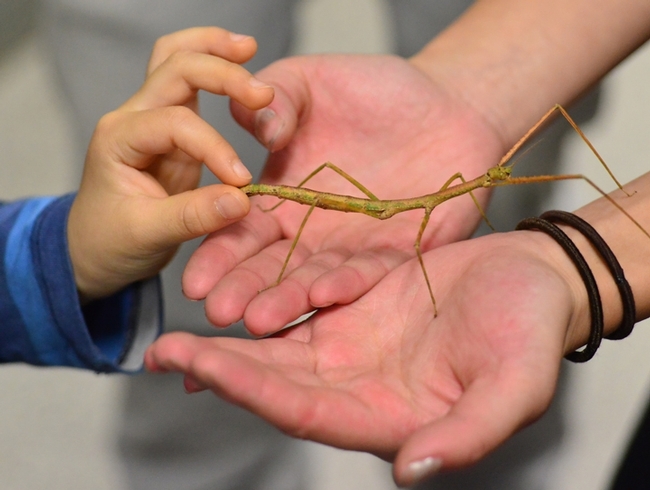
"At the Bohart, we are focusing on the various countries from around the world and some of their insect fauna," said Tabatha Yang, education and outreach coordinator. The 12 countries that the Bohart is highlighting, besides the United States, are Australia, Belize, Democratic Republic of Congo, Korea, Madagascar, Malayasia, Mexico,Papua New Guinea, Peru, Republic of South Africa, and Turkey.
“So for anyone who is from there, has lived there, has visited there, or who wants to visit there, please come and take a peak at some unique insects from around the world,” Yang said. “Some people enjoy traveling to explore cuisine and culture, but traveling for the flora and fauna of the world is equally wonderful. Insects are an important part of nature, so be curious, not afraid.”
The Bohart Museum was founded in 1946 by UC Davis entomologist Richard “Doc” Bohart (1913-2007). It is the home of nearly eight million insect specimens, plus a year-around gift shop and a live "petting zoo" that includes Madagascar hissing cockroaches, stick insects, tarantulas and praying mantids. The gift shop is stocked with books, jewlery, t-shirts, insect-collecting equipment, insect-themed candy, and stuffed animals.
The Bohart Museum is open to the general public Mondays through Thursdays, from 9 a.m. to noon and from 1 to 5 p.m., plus occasional, weekend open houses. Admission is free. Further information is available on the Bohart Museum website.
The UC Davis Department of Entomology and Nematology is chaired by nematologist/professor Steve Nadler. Molecular geneticist/physiologist Joanna Chiu, associate professor, serves as the vice chair.
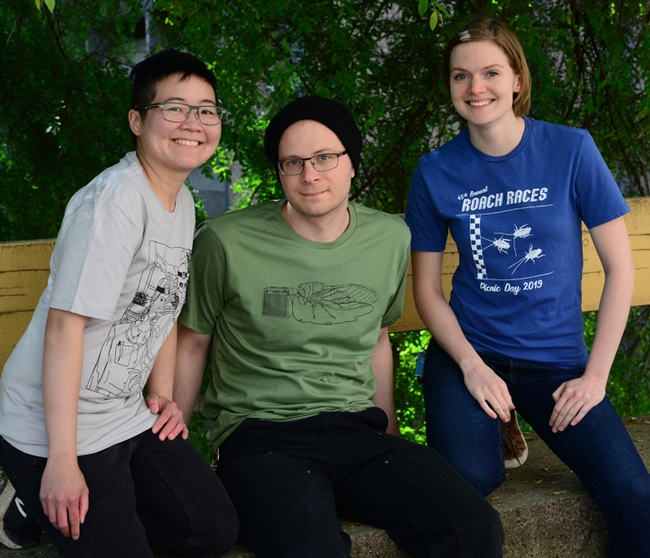
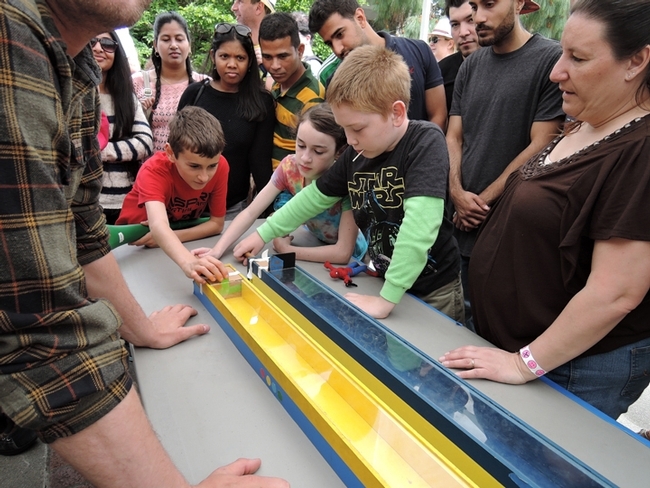
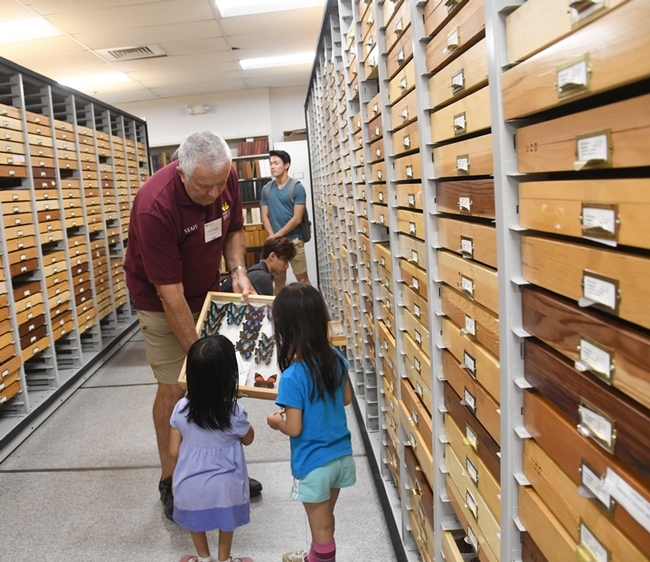
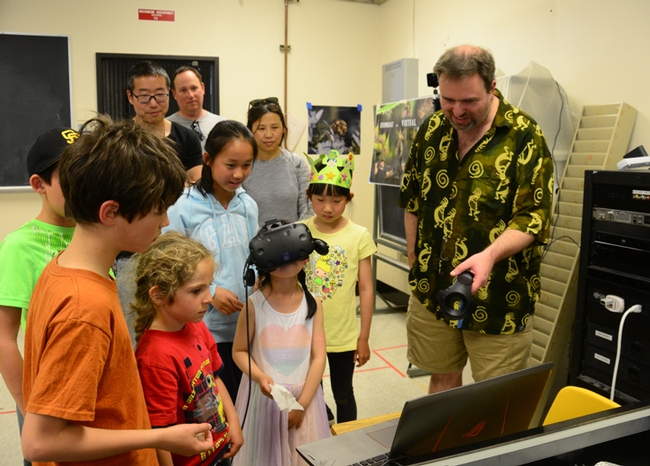
- Author: Kathy Keatley Garvey
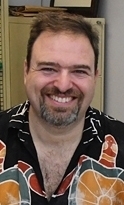
The seminars, coordinated by medical entomologist/assistant professor Geoffrey Attardo, will all take place at 4 p.m. every Wednesday in Room 122 of Briggs Hall, starting April 3 and ending June 5.
The schedule:
Wednesday, April 3
Alistair McGregor,
Topic: "Differences in Tartan Underlie the Evolution of Male Genital Morphology Between Drosophila species"
Host: Geoffrey Attardo, assistant professor, UC Davis Department of Entomology and Nematology
Wednesday, April 10
Monique Rivera, UC Riverside
Topic: "How Agriculture Influences the Structure of Belowground Communities
Host: Elvira de Lange, postdoctoral fellow, UC Davis Department of Entomology and Nematology"
Wednesday, April 17
Bert Hölldobler, Arizona State University
Topic: "The Superorganism: Communication, Cooperation and Conflict in Ants Societies"
Host: Robert Page, distinguished emeritus professor, UC Davis Department of Entomology and Nematology and provost emeritus, Arizona State University
Wednesday, April 24
Sarah Stellwagen, University of Maryland Baltimore County (UMBC)
Topic: "Towards Spider Glue: From Material Properties to Sequencing the Longest Silk Family Gene" (Link)
Hosts: Hanna Kahl, doctoral student in entomology, and Jason Bond, the Evert and Marion Schlinger Endowed Chair in Insect Systematics, UC Davis Department of Entomology and Nematology
Wednesday, May 1
Andrew Nuss, University of Nevada, Reno
Topic: "Breaking Insecticide Resistance: Novel Strategies for Insect Pest Management"
Host: Geoffrey Attardo, assistant professor, UC Davis Department of Entomology and Nematology
Wednesday, May 8
Colin Orians, Tuffs University, Massachussetts
Topic: "Mitigating the Effects of Climate Change on Tea Agroecosystems in China"
Host: Rachel Vannette, assistant professor, UC Davis Department of Entomology and Nematology
Wednesday, May 15
Erin Wilson-Rankin, UC Riverside
Topic: "Ecological Factors Underlying Diet Shifts in California Pollinators"
Host: Rachel Vannette, assistant professor, UC Davis Department of Entomology and Nematology
Wednesday, May 22
James R. Carey, distinguished professor of entomology, UC Davis Department of Entomology and Nematology
Topic: "African Odyssey: Natural Wonders, Wildlife Adventures, and Indigenous Peoples"
Wednesday, May 29
Laurence Packer, York University, Canada
Topic: "Extreme Bees in Extreme Environments: Bee Biogeography in the Atacama Desert"
Hosts: Leslie Saul-Gershenz, associate director of research, Wild Energy Initiative, John Muir Institute of the Environment, UC Davis, and Steve Nadler, professor and chair, UC Davis Department of Entomology and Nematology
Wednesday, June 5
Immo Hansen, New Mexico State University
Topic: "Toward Implementation of Mosquito Sterile Insect Technique"
Host: Geoffrey Attardo, assistant professor, UC Davis Department of Entomology and Nematology
More information is available from Attardo at gmattardo@ucdavis.edu.


